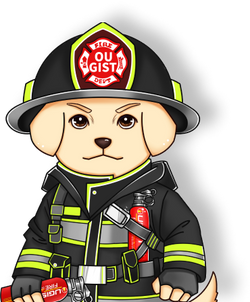
Introduction: Fire extinguishers are essential safety devices designed to tackle different types of fires effectively. They contain various substances, each tailored to combat specific classes of fires. However, it's essential to understand the substances used in different types of extinguishers and be aware of their potential health impacts. In this blog post, we will explore the common substances found in various fire extinguishers and discuss their effects on the human body.
- Water Fire Extinguishers: Water extinguishers are the most basic type and are typically filled with water or water with an additive to increase effectiveness. They are suitable for Class A fires involving ordinary combustibles like wood, paper, and textiles.
Health Impact: Water is generally safe for humans and does not pose any direct health hazards. However, using water extinguishers on electrical fires or flammable liquids can be dangerous, as it may spread the fire and cause electric shocks.
- Foam Fire Extinguishers: Foam extinguishers contain a mix of water and foam concentrate, creating a thick foam when discharged. They are effective on Class A and B fires, which involve flammable liquids like gasoline, oil, and paints.
Health Impact: The foam used in these extinguishers is usually non-toxic. However, prolonged exposure or inhalation of the foam may cause skin irritation and respiratory discomfort in some individuals.
- Carbon Dioxide (CO2) Fire Extinguishers: CO2 extinguishers are filled with pressurized carbon dioxide gas. They are suitable for Class B and C fires involving flammable liquids and electrical equipment.
Health Impact: Carbon dioxide is a non-toxic gas that occurs naturally in the atmosphere. However, using CO2 extinguishers in confined spaces may displace oxygen, leading to oxygen deficiency. Individuals exposed to high concentrations of CO2 may experience dizziness, difficulty breathing, and in extreme cases, loss of consciousness.
- Dry Chemical Powder Fire Extinguishers: Dry chemical extinguishers contain a fine powder that interrupts the chemical reaction of a fire. There are different types of dry chemical extinguishers, including ABC and BC variants.
- ABC: Effective on Class A, B, and C fires involving ordinary combustibles, flammable liquids, and electrical fires.
- BC: Suitable for Class B and C fires involving flammable liquids and electrical fires.
Health Impact: The dry chemical powder can be irritating to the skin, eyes, and respiratory system. Inhaling the powder can cause respiratory distress, and contact with skin or eyes may lead to irritation or burns.
- Wet Chemical Fire Extinguishers: Wet chemical extinguishers are primarily designed for Class K fires involving cooking oils and fats.
Health Impact: The wet chemical agent is typically a potassium-based solution that reacts with cooking oils and fats to create a soapy substance, preventing re-ignition. The wet chemical solution can cause skin and eye irritation but is generally less toxic than other fire extinguisher agents.


Conclusion: Fire extinguishers play a crucial role in preventing small fires from turning into major disasters. Understanding the substances used in different extinguishers is essential for their safe and effective use. While most extinguisher agents have some potential health impacts, their benefits in controlling fires far outweigh the risks when used responsibly. Always follow safety guidelines, avoid using the wrong type of extinguisher for a particular fire, and consider seeking medical attention if you experience adverse effects from exposure to extinguisher substances. Remember, proper fire safety practices can save lives and protect property.


